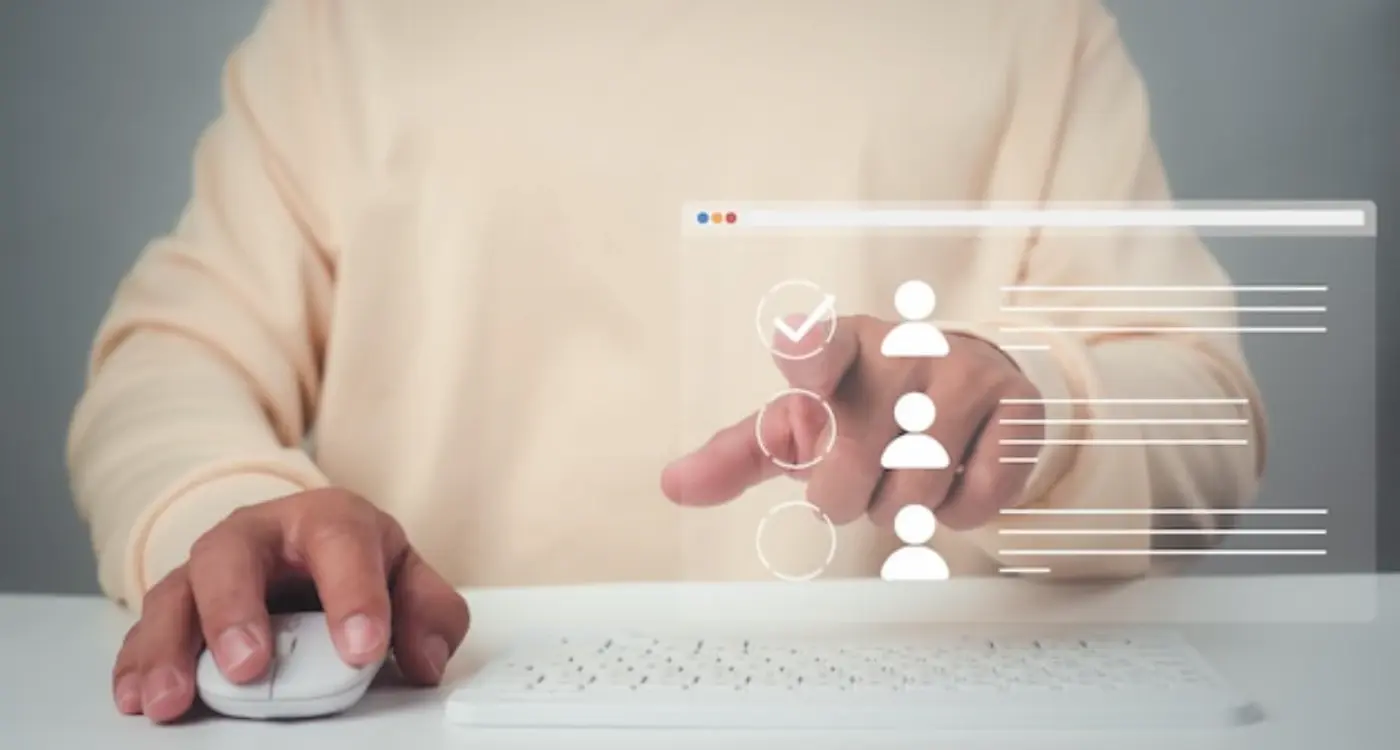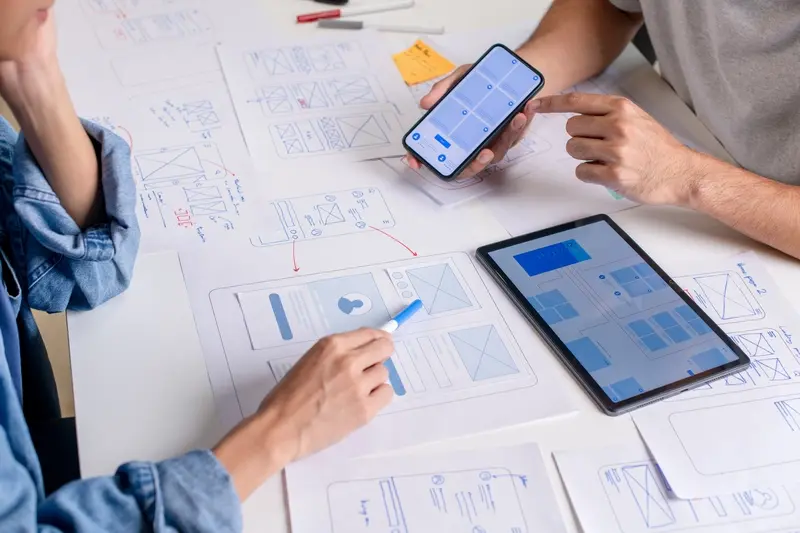How Do I Recruit the Right Users for Testing My Mobile App?
Have you ever launched a mobile app only to discover that real users behave completely differently than you expected? After building apps for over eight years, I can tell you this happens more often than you'd think. The difference between success and failure often comes down to one simple thing—testing your app with the right people before you release it to the world.
Getting feedback on your mobile app isn't just about finding any random person to tap through your screens. You need to find people who actually represent your target audience; people who will use your app in real life, not just give it a quick glance and tell you it looks nice. This process is called UX research, and recruiting the right testing participants can make or break your app's success.
The most dangerous phrase in business is 'we've always done it this way', but when it comes to app testing, an equally dangerous phrase is 'my friends and family love it'
Think about it this way—if you're building a fitness app for busy parents, getting feedback from teenagers or retired people won't give you the insights you need. You need parents who struggle to find time for exercise, who understand the real challenges your app is trying to solve. The same logic applies to every type of mobile app, whether it's for shopping, productivity, or entertainment. Finding these people isn't always straightforward, but it's not impossible either. Throughout this guide, we'll walk through exactly how to identify, find, and work with the right testing participants who will give you honest, valuable feedback that actually helps improve your app.
Understanding Your Target Audience
Before you can recruit the right people to test your mobile app, you need to know exactly who your app is for. This sounds obvious, but you'd be surprised how many people skip this step and end up testing with completely the wrong crowd.
Think about it this way—if you've built a fitness app for busy mums, testing it with university students who have loads of free time won't give you useful feedback. The students might love features that would never work for your actual users, or they might miss problems that would drive mums away from your app.
Who Are Your Real Users?
Start by writing down everything you know about the people who will actually use your app. How old are they? What do they do for work? What phones do they use? Are they tech-savvy or do they struggle with new apps? Do they have lots of free time or are they always rushing about?
Don't just guess at these details—if you've already got some users, talk to them. If you haven't launched yet, research similar apps and see who uses those. Understanding your target audience in depth will make your testing much more effective.
Different Users, Different Needs
Most apps have more than one type of user. A food delivery app might be used by busy professionals ordering lunch, families getting dinner sorted, and students grabbing late-night snacks. Each group uses the app differently and cares about different things.
Make a list of your main user types and what matters most to each one. This will help you recruit the right mix of people for testing and make sure you're getting feedback that actually matters for your app's success.
Finding the Right Number of People
One of the biggest questions I get asked when working with clients on UX research is: "How many people do we actually need for testing?" It's a fair question—after all, nobody wants to spend more money than they need to, but you also don't want to make decisions based on too little data.
The magic number that gets thrown around a lot is five. This comes from research showing that five users can uncover about 85% of usability problems in your mobile app. But here's the thing—this isn't a hard rule, and there are plenty of situations where five won't cut it.
When Five Isn't Enough
If you're building an app for different types of users, you'll need more testing participants. Let's say you're creating a fitness app that targets both beginners and experienced athletes. These groups will use your app completely differently, so testing with just five people total won't give you the full picture.
The same goes for apps with complex features or multiple user journeys. Shopping apps, banking apps, or anything with lots of different functions usually need more eyes on them to spot all the potential issues.
Quality Over Quantity
I've seen teams get so focused on hitting a specific number that they forget what really matters—finding the right people. Ten random users won't give you better insights than five users who actually match your target audience. The key is making sure your testing participants genuinely represent the people who'll be using your mobile app in the real world.
Start with five users per user group or key feature set. If you have three distinct user types, plan for 15 participants total—five from each group.
Remember, you can always run additional rounds of testing if you need more data. It's often better to start smaller and add more participants than to overwhelm yourself with too much feedback at once.
Choosing Between Different Types of Testing
Right, let's talk about the different ways you can actually test your mobile app. There are quite a few options available, and picking the wrong one can waste both time and money—not to mention leave you with feedback that doesn't help at all.
The main decision you'll face is whether to go with moderated or unmoderated testing. Moderated testing means you (or someone from your team) will be there whilst people use your app, either in person or through a video call. This approach lets you ask follow-up questions, clarify confusing responses, and really dig into why someone is struggling with a particular feature. The downside? It takes much longer and costs more money.
Remote vs In-Person Testing
Unmoderated testing happens without you being there. Users complete tasks on their own time using their own devices, which gives you more natural behaviour patterns. People tend to act differently when they know someone is watching them. But you can't ask "why did you do that?" when they make an unexpected choice.
Then there's the question of location. In-person testing gives you the richest data—you can see facial expressions, body language, and exactly how they hold the device. Remote testing is cheaper and faster, plus people use their own phones in their natural environment.
Testing Methods to Consider
- Usability testing sessions (30-60 minutes per person)
- Quick feedback surveys (5-10 minutes)
- A/B testing with different app versions
- Beta testing with early access groups
- Focus groups for broader discussions
My advice? Start with unmoderated remote testing for quick wins, then move to moderated sessions for the tricky bits that need deeper investigation. You don't need to pick just one method—mixing approaches often gives you the complete picture you're after.
Where to Find Your Testing Participants
Finding the right testing participants for your mobile app doesn't have to be complicated, but you do need to know where to look. The good news is that there are loads of places to find people who match your target audience—you just need to pick the right channels for your specific app.
Social media platforms are probably your best starting point. Facebook groups, Reddit communities, and LinkedIn networks often have active users who love sharing their opinions about apps. If you're building a fitness app, join running groups or gym communities. Building something for parents? There are countless parenting forums where people are happy to help test new solutions to their daily challenges.
Professional Recruitment Services
User research platforms like UserTesting, Lookback, and Maze have built-in participant pools that you can filter by demographics, behaviour, and interests. These services cost more than DIY recruitment, but they save you time and often provide higher-quality participants who understand the testing process.
The best testing participants are the ones who genuinely care about solving the problem your app addresses
Your Existing Network
Don't overlook your current customers, email subscribers, or social media followers. They already know your brand and might represent your ideal users perfectly. You can also ask friends and colleagues to share your recruitment message with their networks—word-of-mouth recruitment often brings in engaged participants who are genuinely interested in helping.
University campuses, coworking spaces, and community centres can work well for face-to-face testing sessions. Many people are willing to spend 30 minutes testing an app in exchange for a small incentive like a coffee voucher or gift card.
Screening and Selecting the Best Candidates
Right, so you've found people who want to test your app—brilliant! But here's where things get a bit tricky. Not everyone who volunteers will be the right fit for your specific testing needs. Think of it like casting for a play; you need the right people for the right roles.
The screening process is your chance to filter out participants who might not give you useful feedback. Start with a simple questionnaire that covers the basics: age, location, device type, and how often they use similar apps. But don't stop there. Ask about their comfort level with technology and whether they've done app testing before—both experienced and fresh testers bring different perspectives.
Key Screening Questions to Ask
- What type of smartphone do you use and how old is it?
- How many apps do you download per month?
- Are you comfortable speaking your thoughts out loud whilst using an app?
- Do you have any accessibility requirements we should know about?
- When was the last time you used an app similar to ours?
Here's something I've learned over the years: diversity matters more than perfection. You want people who represent your real users, not just the tech-savvy ones. That means including people who might struggle with technology—they often find the most important usability issues.
Making Your Final Selection
Once you've screened everyone, create a shortlist that balances different user types. Mix experienced users with beginners, different age groups, and various technical skill levels. This gives you a fuller picture of how your app performs across your target audience. Remember, you're not looking for people who will love your app unconditionally—you want honest feedback that helps you improve it.
Preparing Your Participants for Success
Getting the right testing participants for your mobile app is only half the battle—now you need to set them up properly. I've seen brilliant UX research sessions fall apart because participants weren't prepared, and it's painful to watch when you know it could have been avoided.
The key is making your participants feel comfortable and informed before they even touch your app. Send them a brief email a day or two before the session explaining what will happen. Keep it simple—tell them they'll be testing a mobile app, roughly how long it will take, and what they should expect. Don't give away too much detail about what the app does though; you want their genuine first reactions.
Always test your app on the same type of device your participants will use during the session. Nothing derails testing faster than technical hiccups that could have been spotted beforehand.
What Your Participants Need to Know
Your testing participants should understand a few basic things before they start:
- There are no right or wrong answers—you're testing the app, not them
- They should think out loud and share their honest thoughts
- It's perfectly fine to get confused or stuck
- They can ask questions, but you might not answer them straight away
- The session will be recorded (if applicable) and how the data will be used
Make sure they've charged their phone and have a decent internet connection if you're doing remote testing. These small details matter more than you'd think. When participants feel prepared and relaxed, they give you much better insights about your mobile app's user experience.
Conclusion
Getting the right people to test your mobile app isn't rocket science, but it does require some proper planning and thought. You can't just grab the first people you find and expect meaningful results—though I've seen plenty of developers try that approach over the years! The quality of your testing participants directly affects the quality of feedback you'll receive, which means it affects how good your final app will be.
Start by really understanding who your target users are. Not just their age or where they live, but what problems they face and how they use their phones. This knowledge guides every decision you make about recruitment. When you know your audience inside out, finding the right testers becomes much easier; you'll know exactly what to look for and where to look for them.
Don't forget that different types of testing need different approaches to recruitment. What works for usability testing won't necessarily work for beta testing—and that's completely normal. The screening process might seem like extra work, but trust me, spending time upfront to select the right participants saves you hours of confusion later when you're trying to make sense of irrelevant feedback.
Most apps only need between 5-12 testers for meaningful insights, so you don't need to recruit hundreds of people. Focus on quality over quantity every single time. Whether you find participants through social media, user research platforms, or your existing network, the key is matching their characteristics to your actual target market. Prepare them well, set clear expectations, and you'll get the honest, actionable feedback that makes your app better.
Share this
Subscribe To Our Learning Centre
You May Also Like
These Related Guides

How Do I Choose The Right Users For My App Research?

How Much Does Serverless Architecture Cost for Mobile Apps?



